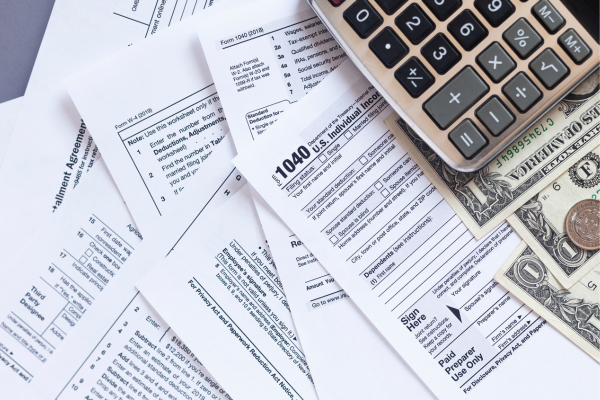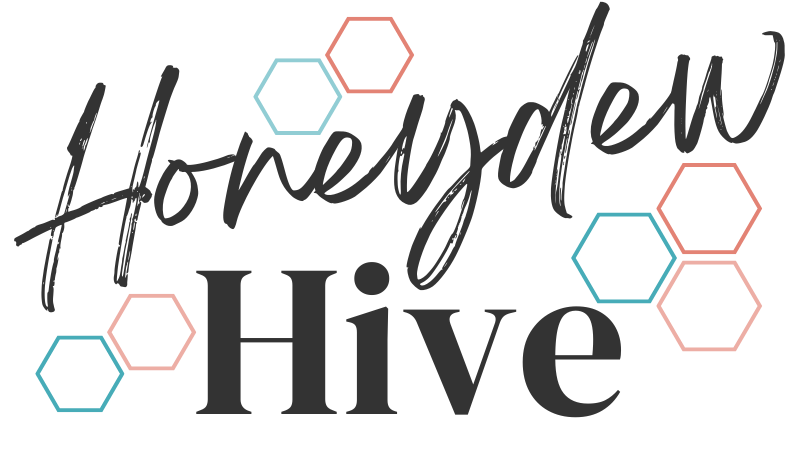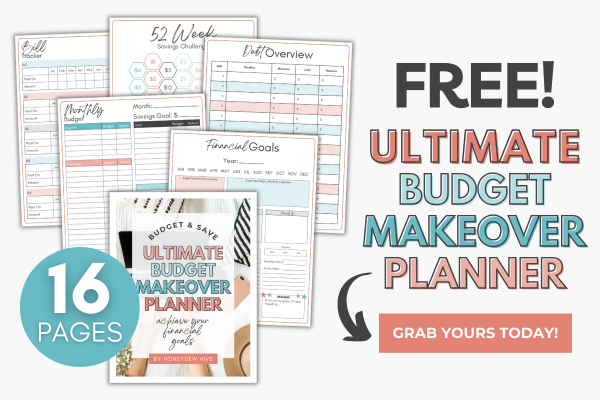How to Track Income & Expenses for Your Side Hustle (Without Getting Overwhelmed)

If you’re earning money from a side hustle — whether that’s selling on Etsy, freelancing, or running a small business — you’ve probably asked yourself: “Where is all my money going?”
You’re not alone. Most people dive into their side hustle focused on bringing in income, but without a system to track what’s coming in and going out, it’s hard to know if you’re actually making a profit — or just staying busy.
As someone with a 20+ year background in corporate finance, I had a clear strategy in place from day one when I launched Honeydew Hive.
I knew how to manage my numbers, track my expenses, and make smart decisions based on the data. But I quickly realized: most people don’t have that kind of financial background — and they shouldn’t have to.
That’s exactly why I created a simple, beginner-friendly way to track income and expenses — so that side hustlers and small business owners can feel confident managing their money without needing fancy software or an accounting degree.
In this post, I’m breaking down exactly how to track your income and expenses for your side hustle — step-by-step.
Whether you’re brand new to business finances or just need a better system, this will give you the tools (and mindset) to stay organized and in control.
Let’s get started.
Why Tracking Your Side Hustle Finances Matters
When you’re juggling a side hustle on top of everything else in life, tracking your income and expenses might feel like something you’ll “get to eventually.” But here’s the truth:
If you’re making money, you’re running a business — and every business needs a financial system.
You don’t need to get fancy. But you do need a way to see the full picture. Here’s why it matters:
- You’ll avoid surprises at tax time: Keeping clear records of your income and expenses makes filing taxes so much easier — and helps you avoid scrambling for receipts or guessing how much you owe.
- You’ll know whether you’re actually making a profit: If you’re bringing in $1,000/month but spending $850 to do it, your side hustle isn’t sustainable. Tracking helps you understand where your money is really going.
- You’ll make smarter business decisions: When you can clearly see which products, services, or platforms are bringing in the most income (and which ones aren’t), you can double down on what’s working and cut what’s not.
- You’ll feel more confident and in control: No more guessing. No more avoiding your bank account. Just clear, organized numbers you can actually use.
Bottom line? Tracking your side hustle finances puts you in the driver’s seat. It gives you the clarity you need to grow your income, reduce unnecessary spending, and set yourself up for long-term success.
If you’re ready to keep things organized without the overwhelm, my Ultimate Small Business Bookkeeping Spreadsheet is the perfect place to start. It’s a ready-to-use Google Sheet designed specifically for side hustlers and small business owners — no fancy software or accounting background required.
RECOMMENDED READ: 10 Profitable Side Hustles You Can Start This Weekend
Step 1: Separate Your Finances
One of the biggest mistakes new side hustlers make is keeping their personal and business finances all mixed together. And I get it — when you’re just starting out, it feels easier to use your regular bank account or personal PayPal.
But if you want clarity, control, and less stress come tax season, here’s your first move:
Separate your business finances from your personal ones.
That doesn’t mean you need to run out and open a business bank account with a monthly fee or a bunch of paperwork. You can keep it simple:

- Open a second checking account: It can still be under your name — no official business setup required. The key is to run only your business income and expenses through it.
- Use a dedicated payment processor account: If you’re using PayPal, Stripe, or Venmo, create a separate account (or business profile) so all your business transactions are easy to find and track.
- Consider a separate credit or debit card: This makes it super simple to categorize business purchases — and you’re less likely to forget what that $26 charge at Staples was for three months later.
Why this matters: When it’s time to track your numbers or file your taxes, having all of your side hustle money flow through one place makes your life so much easier.
You’ll be able to export clean reports, match income to expenses, and know exactly where your money is going.
Trust me — separating your finances is one small habit that will save you hours (and headaches) down the line.
Step 2: Choose a Simple Tracking Method
Now that your side hustle finances are separated, it’s time to actually start tracking them — but let’s be clear:
You don’t need expensive software or complicated accounting tools to stay organized.
In fact, for most side hustlers, simple is better. The goal is to build a system you’ll actually stick with — not one that stresses you out or collects digital dust after two weeks.
Here are a few options to consider:
- Pen and paper: Works if you’re just starting out and have very few transactions, but it can get messy fast — especially when you need to total things up.
- Apps and accounting software: QuickBooks, Wave, and FreshBooks are all options, but they often come with a learning curve, subscription costs, and features you may never use.
- Spreadsheets (my personal favorite): With a well-designed Google Sheet, you can track everything in one place — income, expenses, profit margins, and more — without paying a monthly fee.
If you’re ready for something plug-and-play, I created the Ultimate Small Business Bookkeeping Spreadsheet specifically for side hustlers like you. It’s beginner-friendly, fully editable in Google Sheets, and comes with all the built-in formulas you need to:
- Track income from multiple sources
- Categorize business expenses
- Monitor profit margins
- Prepare for tax season with less stress
No accounting background needed. No confusing dashboards. Just a clear system you’ll actually enjoy using.
If you’ve ever said “I just need something simple to track my business finances,” this is it.
Step 3: Use a Done-for-You Bookkeeping Spreadsheet
If you’re the kind of person who opens a blank spreadsheet and immediately feels overwhelmed — you’re not alone.
That’s exactly why I created the Ultimate Small Business Bookkeeping Spreadsheet — so you don’t have to figure it out from scratch.
This done-for-you Google Sheets template is designed for side hustlers, solopreneurs, and small business owners who want a clean, easy-to-use solution that still tracks everything you need.
Here’s what’s inside:
- Income Tracking Tab: Record all of your income sources in one place — Etsy, PayPal, Venmo, Stripe, Zelle, cash — and automatically see your totals.
- Expense Tracking Tab: Categorize your spending, calculate monthly totals, and easily flag potential deductions for tax time.
- Profit Summary Dashboard: Instantly see how much money you’re making after expenses — no calculator needed.
- 5-Year Dashboard + Comparison Tab: Get a clear snapshot of your growth over time and compare performance year over year.
- Balance Sheet with Key Ratios: See your assets, liabilities, and overall financial position at a glance — perfect for anyone taking their business seriously.
Even better? All the formulas are built in. You just plug in your numbers and the spreadsheet does the rest.
Whether you’re a creative entrepreneur, digital product seller, service provider, or side hustle queen, this spreadsheet gives you the clarity and structure you need to feel in control of your business finances.
Grab the Ultimate Small Business Bookkeeping Spreadsheet here if you’re ready to stop winging it and start running your side hustle like a real business.
Step 4: Set a Weekly or Monthly Tracking Habit
Creating a system is one thing — sticking to it is another.
You don’t need to log every transaction the second it happens, but you do need to build a regular routine that works for your life. This is what keeps your finances from piling up into a confusing mess you dread dealing with.
Here’s what I recommend:
- Pick a consistent day and time: I call mine “Money Monday” — it’s a 15-minute block where I review income, log expenses, and check in on my totals. You could also choose the first day of the month, payday, or even Sunday night with your planner.
- Set a calendar reminder or phone alert: Treat this like a non-negotiable appointment with your business.
- Keep it simple: Just open your spreadsheet, update your numbers, and make any notes you need. The more often you do it, the faster it gets.
- Use the Notes or Comments section in your spreadsheet: Jot down anything irregular — like a refund, a one-time supply purchase, or seasonal income spike. These little notes will help make sense of your numbers later.
The goal is consistency, not perfection.
You don’t need to track every penny on the spot. But by checking in weekly or monthly, you’ll catch red flags early, spot patterns in your income, and feel so much more confident in your business decisions.
Step 5: Prep for Tax Season Early
If there’s one time of year that makes every side hustler panic, it’s tax season — especially if you’ve been winging it with your finances.
But here’s the good news: When you track your income and expenses consistently, tax time becomes way less stressful.
Here’s how to stay ahead of the chaos:
- Set aside money for taxes throughout the year: A good rule of thumb is to save 25–30% of your net profit (that’s income minus expenses). You can move it into a separate savings account after each payout or once a month.
- Keep digital receipts and records: Store screenshots, PDFs, or emailed receipts in a labeled folder — either on your computer or in Google Drive. This makes it easier to support deductions if you’re ever audited.
- Categorize your expenses correctly: Business meals, software, supplies, education, mileage — these can all potentially be deductible. Your bookkeeping spreadsheet should make this super easy to review and organize.
- Track income by platform: Whether you earn through Etsy, PayPal, Stripe, Venmo, or elsewhere, make sure your records match the 1099s you’ll receive. Clean, clear records protect you from underreporting or misfiling.
- Don’t wait until the last minute: If you’ve been updating your spreadsheet regularly, pulling your totals and categories for your tax preparer (or tax software) takes minutes — not hours.

The earlier you start prepping, the more money, time, and stress you’ll save.
And if you’re already using the Ultimate Small Business Bookkeeping Spreadsheet, you’re ahead of the game — because everything you need is in one place, ready to go.
Bonus: Common Side Hustle Tax Write-Offs
One of the best parts about running a side hustle? You may be able to write off a portion of your business expenses — meaning lower taxable income and more money in your pocket.
Here are some of the most common deductions side hustlers overlook:
- Business tools and software: Think Canva Pro, website hosting, domain names, schedulers like Tailwind, or any paid tools you use to run your business.
- Home office expenses: If you have a dedicated space used only for business, you may be able to deduct a portion of your rent, utilities, or internet bill.
- Supplies and materials: Anything you purchase to create your products, run your service, or package and ship orders — from printer ink to shipping labels to ring lights.
- Professional services: Fees you pay to bookkeepers, accountants, designers, virtual assistants, etc.
- Education and business development: Online courses, eBooks, workshops, templates, and guides that directly support your business growth. (Yes — even tools like the Ultimate Bookkeeping Spreadsheet may qualify!)
- Mileage and travel: If you drive to meet clients, attend vendor events, or purchase supplies — track your mileage! You can deduct a standard rate per mile driven for business.
- Marketing and advertising: Facebook ads, Pinterest promos, business cards, or anything you use to get your products or services in front of new people.
Important reminder: Every business is different — and tax laws change often. Always consult a qualified tax professional to confirm what applies to your specific situation.
That said, keeping your expenses organized all year long (with categories already built into your spreadsheet) makes it so much easier to take advantage of these deductions confidently.
Final Thoughts: Don’t Let Disorganization Hold You Back
Building a side hustle takes time, energy, and heart — the last thing you need is financial chaos slowing you down.
When you have a clear system to track your income and expenses, everything changes.
You’ll stop second-guessing your pricing, stop scrambling at tax time, and start making confident, informed decisions that actually grow your business.
And the best part? It doesn’t have to be complicated.
Whether you’re just getting started or already bringing in steady income, the right tools make all the difference.
If you’re ready to simplify your finances and feel completely in control of your business money, check out the Ultimate Small Business Bookkeeping Spreadsheet — the same system I use and recommend to all my clients and customers.
No more guessing. No more overwhelm. Just a smart, stress-free way to manage your side hustle money like a pro.
P.S. While this post focused on tracking your business finances, don’t forget — your personal budget matters too. If you’re trying to balance a side hustle and stay on top of your everyday money goals, grab my FREE Ultimate Budget Makeover Planner.
It’s packed with over 15 pages to help you take control of your personal finances, stay organized, and make your money work harder — even on a tight budget.


